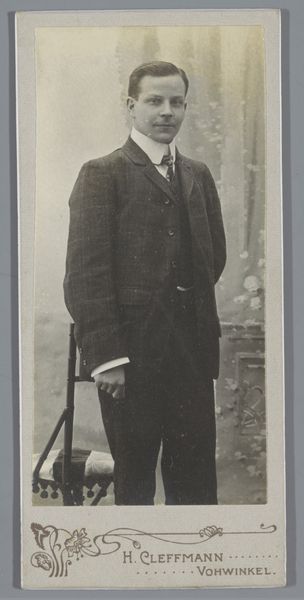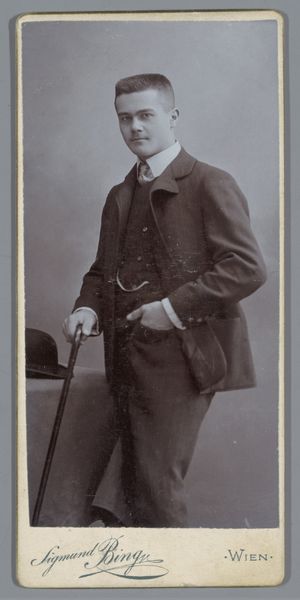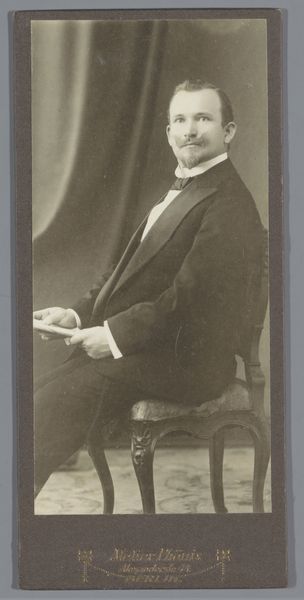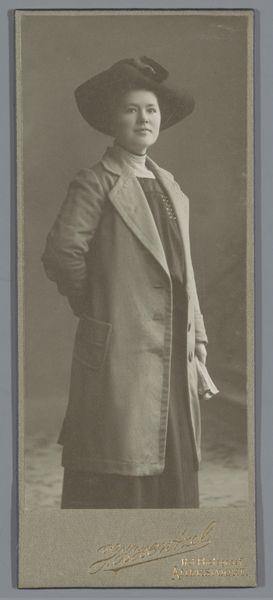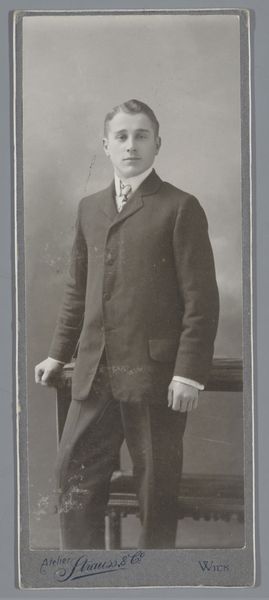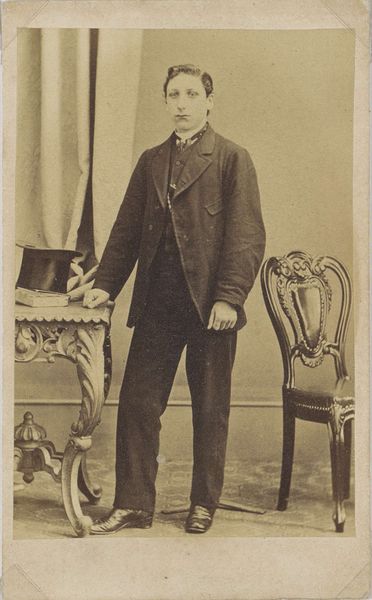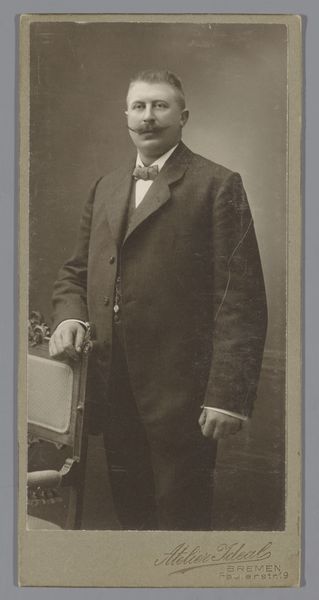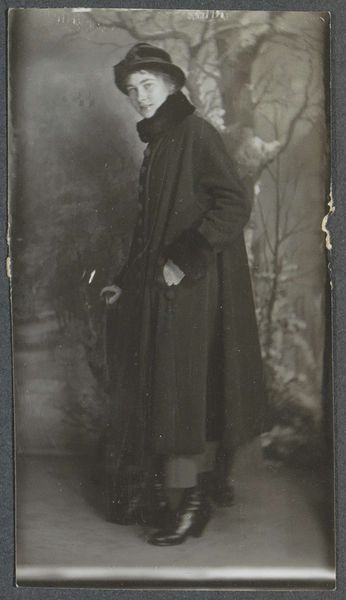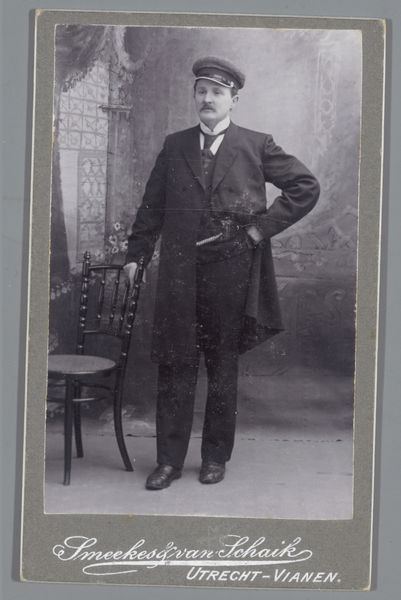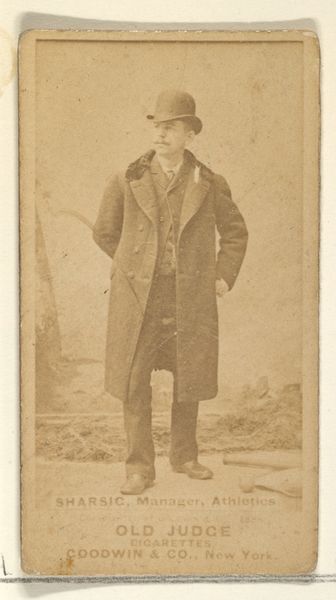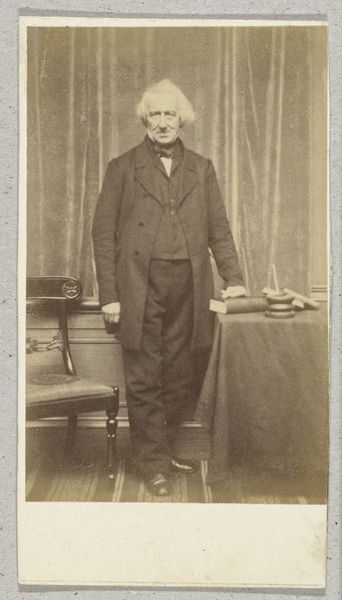
photography, gelatin-silver-print
#
portrait
#
vintage
#
portrait image
#
photography
#
historical photography
#
gelatin-silver-print
#
19th century
#
realism
Dimensions: height 118 mm, width 51 mm
Copyright: Rijks Museum: Open Domain
Editor: This gelatin-silver print, "Portret van een onbekende man" by Georg Brems, dates from somewhere between 1900 and 1914. The sepia tone gives it an antique feel. It’s so formal. I wonder about the man’s social class, how the photographer, Georg Brems, fit into this society, and generally, what sort of statement this piece made at the time, if any. What's your take on this work? Curator: As a materialist, my focus shifts to the photograph as a physical object and its production within a specific socio-economic context. Consider the gelatin-silver print process: a relatively new technology in the early 20th century. This indicates the professionalization of photography. It speaks to the increasing availability of portraiture to a broader, albeit still limited, segment of society. How does the studio setting affect your understanding? Editor: I suppose it removes some of the reality and authenticity, but adds professionalism. The studio setting and the man’s suit point towards the rise of the middle class and a desire for self-representation through mass-produced photography. Curator: Precisely. Furthermore, consider the labor involved: from the photographer's technical skill and equipment to the darkroom assistants developing the print. The consumption of such portraits speaks volumes about the societal value placed on image, memory, and status. It represents the convergence of technology, commerce, and social aspirations. The picture could then have served to solidify his identity within emerging social and economical circles. Editor: I hadn't considered the labor aspect so directly before. It changes the way I see this portrait. I initially perceived it as a simple portrait, but thinking about the entire process gives it new meaning, revealing the subject's societal aspirations. Curator: Indeed. Focusing on materiality opens pathways to understanding the intertwined forces that shape art and its reception.
Comments
No comments
Be the first to comment and join the conversation on the ultimate creative platform.
